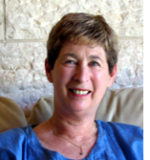
MEVASSERET ZION, Israel — The Jewish custom of once a year building a little hut or sukkah in one’s garden or backyard supposedly harks back to the time many thousands of years ago when the Hebrews were wandering in the wilderness after having left Egypt and had to live in makeshift huts or tabernacles, more or less in the way the Bedouin Arabs live today.
Like many aspects of the Jewish religion, practice and history are bound up together. So it is with the Passover meal, the Seder, with its unleavened bread, matza, and the various symbolic foods all chosen to remind us of about the time when we were in the process of emerging from being slaves in order to become a unified nation. And of course Hannuka commemorates the Hasmonean revolt against the Greeks and the symbolic cleansing of the Temple through the vial of untainted oil. Purim is another reminder of a ‘historic’ event that may or may not have happened, but at least it gives Jews a chance to dress up and celebrate with a carnival of their own.
As a child growing up in London I enjoyed the adventure involved in eating our meals outside our house in the little makeshift hut my parents constructed using blankets that were hung between the two other walls formed by our house on one side and the brick wall between our garden and the one next door, on the other.
We children were set to making colored paper chains and lanterns, while our mother’s artistic talents were devoted to preparing little string bags for fruits of various kinds. All of these were hung around the ‘walls’ and from the roof made of branches from the various trees available in London in the 1950s. No one thought of the palm branches that are so ubiquitous in Israel today, or even of the ‘permanent-temporary’ roofs that are also very popular, and which apparently meet the necessary religious requirements. I regret not having asked my parents how they celebrated the festival in their homes in pre-war Germany.
The festival of Tabernacles falls at the beginning of autumn, and so it is almost inevitable that some rain will fall at that time of the year, whether it’s in Israel or in Europe, or anywhere in the northern hemisphere. I remember dashing through the rain with a bowl of soup in my hand during one such downpour in London, in a procession formed by my parents, my sisters and me.
But as is the way with children, we found it all tremendous fun, and the novelty never wore off. In fact, we were always disappointed to come home from school one day and find that our lovely sukkah had been dismantled. But then I grew up and put away childish things, as the saying goes, and never gave the festival another thought.
It was only when one of my own children came home from kindergarten one day singing a song about building a sukkah that my husband and I decided that we would need to erect some version of the traditional hut on the minuscule balcony of our second-floor apartment. Our children enjoyed the novelty, just as I had as a child, and while we were not concerned with keeping to the niceties of religious observance, we felt that we were providing an experience for our children that united us with the rest of Israel.
We continued to build a somewhat larger sukkah after we moved to a house with a garden and our children produced children of their own. Each year our three-generation family did its best to squeeze into the confines of our new-old hut, now made from gaily coloured Indian fabrics brought back with us from London’s Petticoat Lane market.
But today almost all our grandchildren are grownups themselves, and our sukkah is too small to contain all those rather large bodies. Since religious observance doesn’t play a role for any of us, there doesn’t seem to be much point in squeezing ourselves into an uncomfortable space in order to eat the meal we traditionally have together on a Friday night.
And so we have loaned our ‘permanent-temporary’ sukkah roof to our neighbors, for one of whom religious observance is paramount, and when they invited us for a meal in their sukkah we gladly accepted. It was a strange but rather invigorating experience to be sitting under our familiar roof surrounded by different decorations and eating the food someone else had prepared. I’m quite happy to pass the baton of preparing a temporary hut on to anyone else who is up to the task.
*
Dorothea Shefer-Vanson is an author and freelance writer based in the Jerusalem suburb of Mevasseret Zion. She may be contacted via dorothea.shefer@sdjewishworld.com